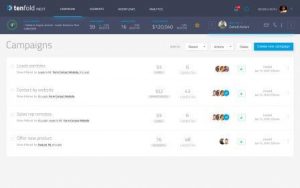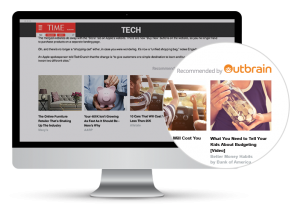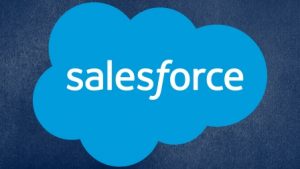June 23, 2022

The rise of remote work has drastically changed the relationship between companies and their employees.
What began two years ago as a sudden shift to a work-from-home model has changed collaboration, coordination, and communication permanently. As companies work to find the right balance between flexible work and optimum productivity, the “hybrid” work model is being codified in company policies. The stakes are high: The terms of the new hybrid work contract have a direct bearing on companies’ ability to keep employees happy, and to attract new ones.
According to a recent Gallup survey, nearly 60% of employees who can work from home would prefer a hybrid work schedule going forward. At the same time, roughly 60% said they want more structure from their employers when it comes to deciding hybrid work schedules. Less clear for employers, though, is how frequently employees might come into the office.
Every company has to find its own unique set of terms, and for many it’s a work in progress that will continue long into the future. Will employers require in-office days? If so, how many days per week?
Fast Company reached out to a variety of business leaders and experts to ask them what they’ve learned about hybrid work, and how they’re putting those learnings into practice. Their comments have been edited for length and clarity.
Sangeeta Chakraborty, chief customer officer, Miro
For the last 12 years, there’s been an arms race to hire tech talent, and before the pandemic, this race gave rise to luxury perks and benefits that companies believed would help them recruit and retain top talent. But in the last two years, we’ve seen that the biggest benefit employees want from an employer is flexibility in when, where, and how they work. Employers who want to retain talent need to enable that flexibility by investing in ways of working that support it. The new normal is constant change, which means being agile is more important than ever, and adaptability is a key differentiator between success and failure.
Jared Spataro, corporate vice president of modern work, Microsoft
The people who went home to work in 2020 aren’t the same as those returning to the office in 2022. The question on everyone’s minds today—particularly as we face a potential recessionary environment—is whether this is a temporary pendulum swing or the new normal. We’re continuing to rely on data, rather than dogma, to chart our path forward. And the data tells us there’s just no erasing the lived experience of the past two years. We’re leveraging technology to enable work to happen across time and space, synchronously and asynchronously. New innovations like cameras, digital whiteboards, and virtual meeting rooms all help give everyone a voice and seat at the table so they can be seen, heard, and contribute in a meaningful way.
Anne Erni, chief people officer, Audible
It’s up to employers to determine what activities truly require employees to go into the office and make the office an exciting and collaborative place to work. The phenomenon known as the Great Resignation that is fueling a massive wave of career changes is actually a significant opportunity for businesses to offer employees a compelling reason to stay. If businesses expect to retain employees, they need to practice active listening.
Cristiano Amon, CEO, Qualcomm
I’m a firm believer in the importance of in-person collaboration. Yes, we have the ability to work remotely, but we also want to preserve our culture. The reality is, if you don’t create as a community, it’s very difficult to maintain a strong culture. It’s all about striking the right balance between flexibility and providing people with an environment to work together effectively. We had a phased approach in bringing our employees back to the office, and we’re now embracing a hybrid schedule. We allow flexibility but are leaning into opportunities for people to spend time together and continue to build our incredible culture.
Gary Little, president and CEO, Foursquare
I think we’re all craving more collaboration, but with the caveat that individuals need flexibility to mix it up. Hire people with integrity and support them with your full corporate weight—you’ll see results delivered from the couch or the cubicle. If the past two years are any indication, the flexible model has only aided our continued growth and bottom line.
Connor Diemand-Yauman, cofounder and coCEO, Merit America
Across industries, talented people with skills and ambition don’t just live in Manhattan, but also in Milwaukee and Mobile and Monrovia. For those who can’t afford to relocate to expensive cities, remote work is a powerful equalizer, creating an unprecedented opportunity for equity in the workplace. Businesses that bake a remote-first mindset into hiring, training, and employee development are poised to succeed in the future of hybrid work.
Nicholas Bloom, economics professor, Stanford University
Working from home is clearly here to stay, and for most professionals it will be 2 to 3 days a week in the office and 2 to 3 days a week at home. The big battleground over WFH is who gets to choose how many days and which days. I advise companies to figure out how many days employees genuinely need in the office and aim for that—no more and no less. Evaluate how long employees in each team need for all their weekly face-to-face meetings, trainings, presentations, mentoring events, lunches, and client meetings. The rest of the time they should be home. That typically means not Monday or Friday as those are the most popular WFH days.
Christy Pambianchi, executive vice president and chief people officer, Intel Corporation
While it’s a major shift from pre-pandemic life, we’re trying to keep our new approach simple and avoid overcomplicating our policies. Our employees have been delivering amazing results over the past two years, so let’s embrace flexibility. By doing that, we can attract and retain the best and brightest talent. While hybrid and flexible working models can cast a wider recruitment net and provide the flexibility many candidates seek, we know we still face the challenge of ensuring that the future model is inclusive and supports everyone long term.
Ryan Cairns, vice president, home and work, Meta Reality Labs
Over the past two years, we relied heavily on the same video conferencing and messaging tools we used to communicate when we were in offices together. The move to hybrid work is an even bigger shift that brings new challenges for how we all communicate. Adapting our physical spaces to provide virtual connection creates new requirements for office technology. It means investing in versatile, immersive tools. The metaverse will be one of the “tools” that will change businesses for the better with technology that helps us work smarter and offers synchronous collaboration in both physical and virtual spaces.
Helen Papagiannis, founder, XR Goes Pop
Augmented Reality presented a new way to work over the course of the pandemic by supporting collaboration across distances. AR enables you to “see” what another person sees, and annotate directly on top of that view in real time, whether you’re a novice or an expert. We’ve witnessed how AR can help to reduce not only physical distance between people, but also the space—and error—in between concepts and ideas.
Sabine Bendiek, chief people and operating officer and labor relations director, SAP
After the experience of pandemic-oriented remote work, we believe people will want to reconvene with colleagues in person. We expect most will seek out new opportunities to do that through collaborative work, trainings, networking, or simply to be face-to-face with friends and colleagues. However, remote work will not disappear.
Feargal Moorhead, chief people officer, Zoox
While remote work certainly has its perks, particularly the flexibility it provides employees, many fully remote workers miss out on the spontaneous collaboration that happens in person. I believe we’re going to continue to see companies move toward a hybrid offering, but it isn’t a one-size-fits-all approach, and each will need to find the right balance of remote and in-office days that works best for its employees.”
Tiffany Stevenson, SVP and chief people officer, Patreon
The changes we’re seeing are indicative of one of the most significant shifts in the labor market since the dawn of the industrial revolution and unionized labor. Companies are taking a long and overdue step toward navigating flexibility in a way that matches the needs of their talent. The long-term winners in this space are companies who can help navigate these shifts in a way that mutually benefits their mission and teams in unison. The majority of our office days are flexible so teammates have the choice to work from a location that supports their productivity and life. This is by no means a “finish line” moment for us—we continue to listen to feedback and evaluate how our teams are responding to their overall experience.
Anna Avalos, chief people officer, SoFi
It has been inspiring to see the innovation and adaptability as many of us have moved from working primarily in the office to 100% from home and now the transition to hybrid. It’s forced us to be more intentional about ensuring we unplug; and since work is in our homes, that we don’t work around the clock, which is something we are very conscious of at SoFi. We’ve rolled out SoFridays, which allow eligible employees to end their day early on Friday and take that time for themselves. We also launched SoFi Cares, which helps provide tools and resources to help folks balance taking care of the business and taking care of themselves.
The changes we’re seeing are indicative of one of the most significant shifts in the labor market since the the industrial revolution…”
Patreon CPO Tiffany Stevenson
Jeetu Patel, EVP and GM, security and collaboration business units, Cisco
The future of work will definitively be hybrid. But we also know that hybrid work doesn’t work yet, and this mixed mode of working can’t be left unchecked. We need to get better technologically to collaborate and ideate without distance being a barrier. Those who try to revert to the way things used to be in a Draconian way will face backlash and lose top talent. We are now entering a world where flexibility will be demanded, and inclusivity will be expected as the norm.
Nadir Ali, CEO, Inpixon
The customer-first mantra is ceding to an employee-first mentality in many enterprises. It’s critical companies provide their employees with a truly exceptional work experience, and if that’s too lofty of an idea, then at least provide a hassle-free, productive environment! This is especially true if employees are mandated to come into the office. If they return to a weak experience, they are going to become another statistic in the Great Resignation.
Melissa Daimler, chief learning officer, Udemy
It’s important to clarify how to work together. We are codifying our values through a “re-culturing” process—identifying specific behaviors we expect and want to see for each value and then embedding those into our processes of hiring, onboarding, and talent managing. Doing so provides a clear playbook for everyone, making it easier and psychologically safer for everyone to do their job well. We can no longer hide behind free food and ping-pong tables when defining culture.
Katie Watson, chief human resources officer, Solidigm
As a new company that launched in December 2021–our situation is unique. We have taken lessons learned from the pandemic and embedded them in our culture from the start. We offer flexible work schedules, unlimited time off, and a summer holiday shutdown week in the U.S. in addition to limiting Friday meetings and scheduling all meetings in 50-minute or 25-minute increments, so there are breaks.
Jim Bailey, CEO of the Americas strategic business unit, Capgemini
In the past two years, there have been clear changes to how organizations engage new talent. With most companies now offering flexible work policies, leaders must be creative and intentional in their efforts to engage team members in the ways we once could. Supporting flexible teams requires leaders to be flexible themselves—with customized employee engagement strategies to close any gaps created when members are in remote or hybrid models. The talent market has become more competitive than ever—for both entry-level workers and experienced candidates. Organizations need differentiators to stand out from the pack and retain and attract top talent.
Jenny Lay-Flurrie, chief accessibility officer, Microsoft
The shift to remote and hybrid work during the COVID-19 pandemic, for people with disabilities who had employers offering that option, will continue post-pandemic. Working remotely presents an economic and workforce opportunity to more than one billion people around the world with disabilities.
Himanshu Palsule, CEO, Cornerstone
Learning digital and technical skills is no longer an option, it’s a must. We are far more agile and adaptable than we previously thought—and I believe this has been good for business. Employees have grown accustomed to greater flexibility and autonomy over their schedule, and organizations need to espouse a flexible-first mindset where employees have the power to choose their location and the hours they work.
Mark Flint, cofounder and CEO, The Escape Game
With the job market as tight and volatile as it has been, there is very little margin for error, and being adaptable and creative is essential. The “rules of the game” are different and still changing; if our team is going to win, we know we have to change as well. For our WFH policies, we tried many different versions for various periods of time. We were intentional and transparent in our communication with our teams and honest about the fact that we would experiment with different models.
I believe we are moving into an age where no one wants work to dominate their life.”
Global Citizen Year CEO Erin Lewellen
Raphael Ouzan, cofounder and CEO, A. Team
We’re seeing hundreds of companies, from early-stage startups to the Fortune 500, growing quickly and cost-effectively by reframing their activities by missions instead of thinking in terms of headcount, departments, and projects. We’ve built A. Team with this philosophy in mind—our company is organized around missions, executed by a mix of full-time employees and independent A. Teamers, distributed all over the world. Everyone joins our weekly meetings, meets in person once or twice a year at our week-long company summits, and benefit from a growing shared context from discussing financial and business metrics with transparency. It’s an experiment in a new model for the future of work—and it’s working.
Betsy Leatherman, global president of consulting services, Leadership Circle
We’ve noticed through coaching executives and working to make our own organization successful that reactive thinkers are sinking and creative thinkers are swimming across all levels. We are currently piloting a 4-day workweek, and several of us are testing a 3-meeting-per-day policy so we have space for thinking and exercising creative muscles during the day.
Chris Capossela, chief marketing officer and EVP of marketing and consumer business, Microsoft
Part of establishing this new future of work will be rebuilding our social capital. Rebuilding employee networks is a top priority for me, as these relationships create a sense of community, help employees feel supported in their day-to-day work, inspire colleagues to garner new ideas, motivate for successful collaboration, and overall contribute to employee retention and individual career growth.
Atish Banerjea, CIO, Meta
One of the most important lessons to come out of the last couple of years is that we need to build a future that democratizes the hybrid work experience and makes it accessible to all. We’ve already begun working on video-conferencing features that adjust sound levels to help remote participants hear in-person participants even if they are wearing a mask. We’re developing things like virtual name tags that are applied to employees sharing a physical space to help remote employees know who is speaking. And we are thinking about how AR/VR can power better experiences for the future of work, including virtual campus tools that enable employees to experience our offices in VR, supporting virtual productivity applications from trainings to health and wellness, and tools that bridge the gap across hybrid events.
Erin Lewellen, CEO, Global Citizen Year
I believe we are moving into an age where no one wants work to dominate their life. Folks want work to be a part of their life, and they want work to add purpose (if possible); but regardless, they don’t want it to be the focal point. We are choosing to focus on the what, not the how. If you do your best work remotely and in another country, so be it. If you need the structure of an office environment, let’s support that. We all feel best when equipped to do our best work, and that means different things to different people.
Fast Company , Read Full Story
(33)








